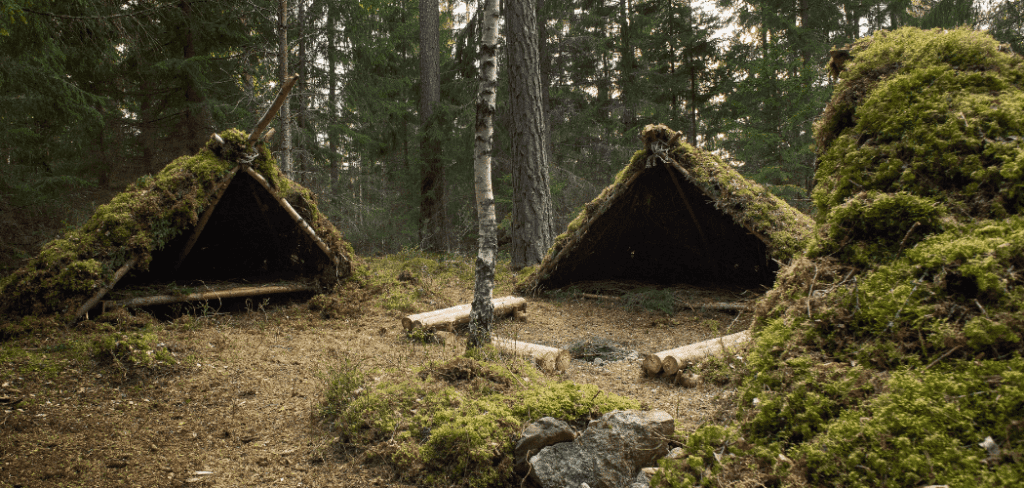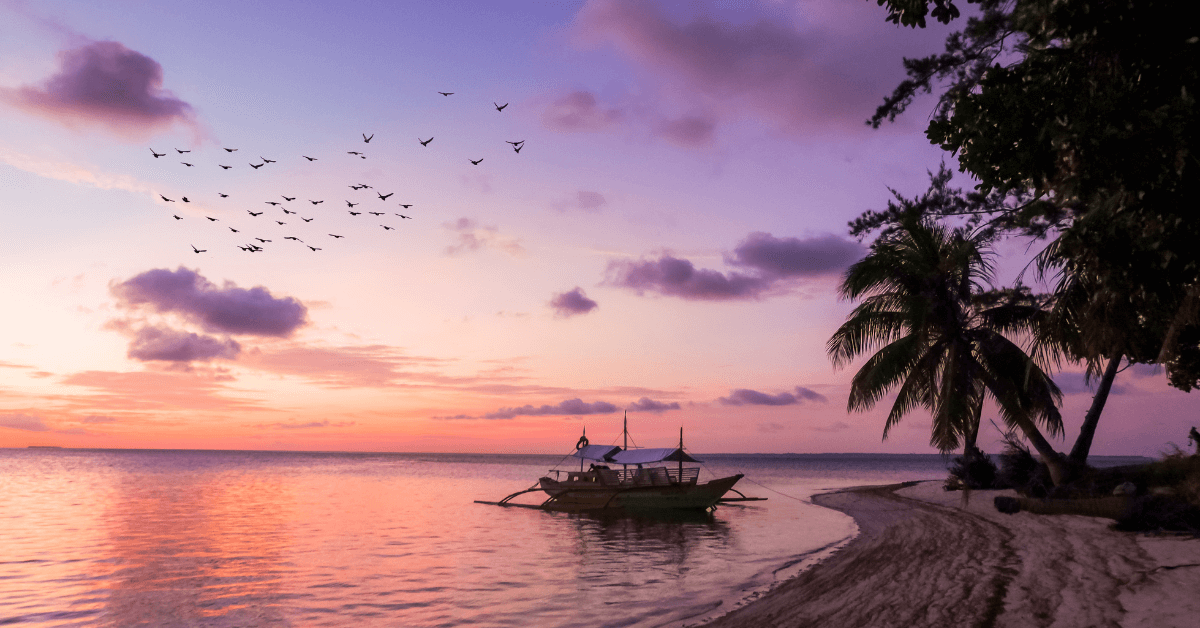Tropical islands are the epitome of paradise, with their clear blue waters, sandy beaches, and lush greenery. However, these idyllic destinations can quickly turn into a nightmare if you find yourself stranded without shelter. In such situations, building a shelter on a tropical island will be crucial for survival, whether you’re a seasoned outdoor enthusiast or a survivalist looking to be prepared for anything life throws at you.
With that in mind, below, we’ll discuss the essential factors to consider when building a shelter on a tropical island, the materials and tools needed for construction, and step-by-step instructions for building a sturdy and durable shelter.
So, whether you’re planning a tropical island adventure or just want to be prepared for any outdoor situation, this guide will help you build the perfect shelter for your needs. So let’s dive in and learn how to build a shelter on a tropical island!
Step 1: Pick An Appropriate Location
When building a shelter on a tropical island, selecting the right location is crucial for your safety and comfort. Here are some important factors to consider when choosing a location for your shelter:
1. Safety from Hazards
The first thing to consider is safety from potential hazards. Look for a location that is free from hazards such as falling coconuts, poisonous plants, and unstable ground. Avoid building your shelter near the water’s edge as tides can rise and flood your shelter.
2. Protection from the Elements
Consider the elements when selecting your location. Choose a spot that is sheltered from strong winds and is not in a low-lying area that may be prone to flooding during heavy rain. Avoid building your shelter directly under a tree, as falling branches can pose a hazard during storms.
3. Accessibility
Look for a location that is easily accessible for gathering materials, such as palm fronds, bamboo, and vines, for building your shelter. Choose a location that is close to a freshwater source for drinking and cooking.
4. Terrain
Assess the terrain before selecting your location. Look for level ground that is easy to clear and has good drainage. Avoid building your shelter on a slope or uneven terrain, as this can affect the stability and durability of your shelter.
5. Visibility
Consider the visibility of your location, especially if you are in need of rescue. Choose a location that is visible from the air or the water, and use natural materials such as palm fronds or bright clothing to make your shelter more visible.
Remember to assess the surrounding environment and terrain carefully to avoid potential hazards and ensure a successful shelter-building experience.
Related: Three Possible Sources Of Shelter In The Rainforest For Humans
Step 2: Gather Materials and Tools Needed for Building a Shelter on a Tropical Island
Now that you have selected a suitable location for your shelter, it’s time to gather the necessary materials and tools for construction. Here are the essential materials and tools needed for building a shelter on a tropical island:
- Natural Materials: In a tropical island environment, natural materials such as palm fronds, bamboo, and vines are readily available and make excellent building materials. Collect a sufficient amount of materials, including long and flexible palm fronds for roofing, and sturdy bamboo poles for support.
- Cutting Tools: You’ll need cutting tools such as machetes, knives, or saws to gather and shape your building materials. Be sure to bring a sharpening stone to keep your cutting tools sharp and in good condition.
- Cordage: Cordage is essential for tying your building materials together. Natural materials such as vines or coconut fibers can be used, but it’s best to bring some paracord or rope to ensure you have enough and to save time.
- Hammer and Nails: Although not essential, a hammer and nails can be useful for securing the structure and making adjustments. Bring a small hammer and a box of nails just in case.
- Ground Cover: Adding a layer of ground cover, such as banana leaves or woven mats, can provide insulation and make your shelter more comfortable. It also helps to keep bugs and insects at bay.
Be sure to pack the material in a waterproof bag and keep them dry to avoid any damage or rust. And remember to leave the environment as you found it by not damaging any living trees or plants.
Step 3: Start Building the Shelter

Now that you’ve gathered your materials and tools, it’s time to start building your shelter. Follow these steps to build a sturdy and comfortable shelter on a tropical island:
1st Step: Clear the Area
Start by clearing the area where you plan to build your shelter. Remove any debris or sharp objects that could damage your shelter, and level the ground as much as possible. This will help to ensure that your shelter is stable and secure.
2nd Step: Frame the Shelter
Use your bamboo poles to frame the shelter. Place two long poles parallel to each other and secure them together using cordage. These will be the sides of your shelter. Place two more poles perpendicular to the first two, and secure them together using cordage. These will be the support poles for the roof.
3rd Step: Add Roof Support
Add additional support to the roof by placing more bamboo poles across the support poles. Tie them securely using cordage, and space them out evenly.
4th Step: Add Roofing
Now it’s time to add the roofing. Use your palm fronds to cover the roof. Start at the bottom and work your way up, overlapping each frond to provide additional coverage. Use cordage to tie them securely to the support poles.
5th Step: Add Ground Cover
If you have ground cover, place it on the floor of the shelter. This will provide insulation and make the shelter more comfortable. If you don’t have ground cover, use palm fronds or other natural materials to create a bed.
6th Step: Finishing Touches
Add any finishing touches, such as additional cordage or decorations, to your shelter. Test the stability of the shelter by gently pushing on the sides and roof to ensure that it’s secure.
Types of Shelter to Build on a Tropical Island
When it comes to building a shelter on a tropical island, there are a few different types of shelter that you can consider. Here are some of the most common types of shelter to build on a tropical island:
1. Lean-To Shelter
A lean-to shelter is a simple shelter that can be built quickly and easily using natural materials like bamboo and palm fronds. This shelter consists of a single wall made from bamboo poles, with a sloping roof made from palm fronds.
It’s a great option if you’re in a hurry and just need a basic shelter to protect you from the elements.
2. A-Frame Shelter
An A-frame shelter is a more complex shelter that provides better protection from the elements than a lean-to shelter. This shelter consists of two walls made from bamboo poles, with a sloping roof made from palm fronds.
It’s called an A-frame because the walls are shaped like the letter A. This shelter is more sturdy than a lean-to shelter and provides better protection from wind and rain.
3. Wickiup Shelter
A wickiup shelter is a traditional Native American shelter that’s designed to be sturdy and long-lasting. This shelter consists of a framework made from long poles, with a cone-shaped roof made from palm fronds.
This is a great option if you’re planning on staying on the island for an extended period of time, as it provides excellent protection from the elements.
4. Treehouse Shelter
If you’re on an island with plenty of trees, a treehouse shelter can be a great option. This shelter consists of a platform built in a tree, with a roof made from palm fronds or other natural materials. It’s a great way to stay off the ground and protect yourself from animals and other hazards.
5. Tarp Shelter
A tarp shelter is a simple and easy-to-build shelter that can provide quick protection from the elements. This shelter consists of a tarp or other waterproof material, stretched over a framework made from bamboo poles. It’s a great option if you need to build a shelter quickly and don’t have time to gather a lot of natural materials.
Remember to prioritize safety and comfort when building your shelter, and always be prepared for the unexpected.
Final Thoughts – How Do You Build a Shelter on a Tropical Island?
To build a shelter on a tropical island, you need to first choose a safe location and gather the necessary materials and tools. Popular shelter types include lean-to, A-frame, wickiup, treehouse, and tarp shelters. Depending on the island’s resources, you can use natural materials such as bamboo, palm leaves, and vines to construct your shelter.
When it comes to shelter type, there are several options to choose from, including lean-to, A-frame, wickiup, treehouse, and tarp shelters. Consider the weather conditions on the island, the resources available, and your own skill level when choosing the type of shelter to build.
By following the tips and techniques outlined in this article, you can build a shelter that will keep you safe, comfortable, and protected from the elements. So get out there, enjoy the beauty of nature, and be prepared for anything life throws at you!
